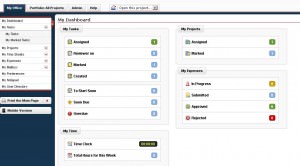Work Hours Tracker: The Key to Effective Time Management in the Workplace
In today’s fast-paced business environment, being able to effectively manage time is not just a skill but an absolute necessity. With a multitude of tools available to assist in this process, one tool stands out for its simplicity and effectiveness—the work hours tracker.
This tool serves a dual purpose: it enables employees to better manage their time and gives managers valuable insights into utilizing work hours. This is particularly important as employees, especially those working remotely, can easily experience burnout from excessive workloads. In addition to that, when employees are aware that they are under supervision, their productivity tends to rise by 7%, which in turn boosts profits.
Failure to create a positive and productive work environment may result in a high turnover rate among current employees. So, it is crucial to understand the significance of tracking work hours and how to do so efficiently.

The Significance of Tracking Work Hours
The essence of work hours tracking transcends the mere recording of the hours an employee works. It delves into the world of understanding how those hours are allocated. This knowledge paves the way to identify bottlenecks, streamline processes, and ultimately, enhance productivity.
Consider an employee who invests a substantial part of their day on tasks that do not align with their key performance indicators (KPIs). A work hours tracker can bring this misalignment to light, enabling you, the business owner, to collaborate and communicate with employees to optimize their time allocation.
To effectively track working hours, the majority of businesses turn to hours worked tracker solutions, which enable them to effortlessly keep tabs on all of their employees, whether they are working from home or in the office. This way you will gain various reports on which tools are helping your team stay more productive, and which bottlenecks need to be solved instantly. Operating in such a manner will ensure that you are always generating profits and never operate at a loss.
The Advantages of Using a Work Hours Tracker
1. Boosting Productivity
A work hours tracker helps companies to boost productivity by providing a transparent view of time expenditure. It serves as a guide, aiding employees in identifying and eliminating activities that consume their time without contributing to their objectives. This process of identification and elimination can lead to a notable surge in productivity.
2. Promoting Work-Life Balance
Work hours trackers also play a pivotal role in fostering a healthy work-life balance, a concept that is increasingly gaining importance in today’s hyper-connected world. By clearly defining work hours, they help employees guard against the risk of overworking, a common concept in today’s remote and flexible working arrangements.
This clear demarcation ensures that employees reserve adequate time for personal pursuits, contributing to their overall well-being and job satisfaction.
3. Enhancing Project Management
From a managerial perspective, work hours trackers can be harnessed for effective project planning and management. By gaining insights into task durations and how time is spent, managers can formulate more precise project timelines and resource allocations.
This data-driven approach can significantly improve the accuracy of project planning, leading to better project outcomes and more efficient use of resources.
4. Implementing a Work Hours Tracker
The introduction of a work hours tracker should be approached with a focus on improvement, not surveillance. It’s crucial for employees to comprehend the benefits of the tracker and how it can serve as a catalyst in their time management journey. The tracker is not a tool to monitor employees but a resource to empower them, helping them understand their work patterns and improve their productivity.
Another key consideration is the selection of a tracker that is user-friendly and seamlessly integrates with the other tools employed by your team. The ease with which employees can track their time directly influences the accuracy and utility of the data collected. A tracker that is difficult to use or does not integrate well with existing systems can lead to inaccurate data and lower adoption rates among employees.
Choosing The Right Work Tracker
When selecting a work hours tracker, it’s essential to consider the specific needs and context of your organization. Not all tracking tools are created equal, and choosing the wrong one can lead to more harm than good. Begin by identifying the features that are most crucial for your business, such as real-time tracking, the ability to handle multiple projects, or specific reporting requirements. Compatibility is another critical aspect. The chosen tool should integrate seamlessly with the software already in use within your company to avoid disruptions and maintain workflow efficiency. Consider the user experience as well, since the tool’s ease of use directly impacts employee acceptance and usage. Finally, remember to consider the cost.
While there are free tools available, they might not offer the breadth of features that paid ones do. Strike a balance between the features offered and the affordability to ensure that the tracker is sustainable in the long run.
Overcoming Resistance to Work Hours Tracker
It is common for employees to resist the implementation of a work hours tracker due to concerns over privacy and micromanagement. To address these concerns, it’s vital to communicate clearly and transparently about the reasons behind the tracker’s implementation and the benefits it brings to individual employees. Focus on how the tool can help employees manage their time better, improve work-life balance, and even potentially increase their earning potential through accurate overtime calculation.
It is also essential to reassure employees about the security measures in place to protect their privacy and to emphasize that the tool is not meant to spy on them but to enhance productivity and job satisfaction. Furthermore, inviting feedback from employees and involving them in the process can help to foster a sense of ownership and reduce resistance.
Customizing Work Hours Tracker to Suit Your Business
Different businesses have different needs, and your work hours tracker should reflect that. Many tracking tools offer customizable features, allowing you to tailor the tool to your organization’s specific requirements. For instance, if your business runs multiple simultaneous projects, you might need a tracker that can handle this complexity and provide project-specific data.
If you have a lot of shift work or overtime, a tool with robust scheduling and overtime calculation features would be ideal. Some businesses might need a high level of detail in their reports, while others prefer a simpler, more streamlined approach. When customizing your tracker, consider factors like the size of your team, the nature of the work you do, your management style, and your long-term business goals.
Remember, the ultimate aim is to find a solution that makes work more efficient and enjoyable for everyone involved.
Conclusion
In an increasingly demanding business environment, time is a finite resource that needs to be carefully managed. A work hours tracker emerges as a powerful instrument that not only enhances time management but also fosters productivity, facilitates work-life balance, and strengthens project management. By casting light on work patterns, this tool enables the alignment of effort with key performance indicators, improving both individual and organizational effectiveness. It’s vital to approach its implementation with care, considering employees’ needs and concerns, the compatibility with existing systems, and the unique requirements of your business.
Chosen wisely and used judiciously, a work hours tracker can transform your workplace dynamics, boosting both employee satisfaction and company profitability. The true power of this tool lies not just in tracking time but in empowering employees, enabling them to make the most of their working hours, thereby propelling your organization toward its goals.







